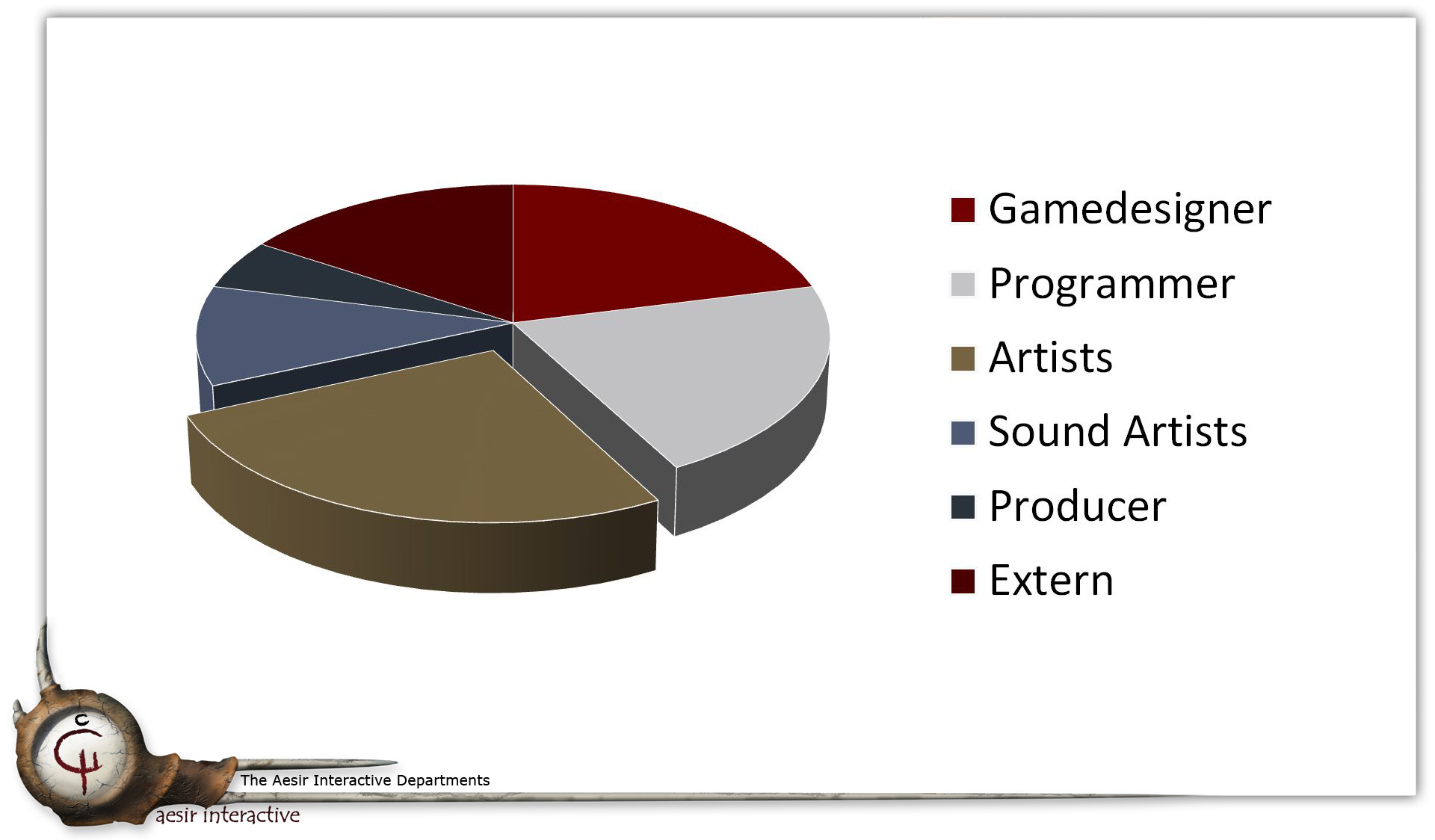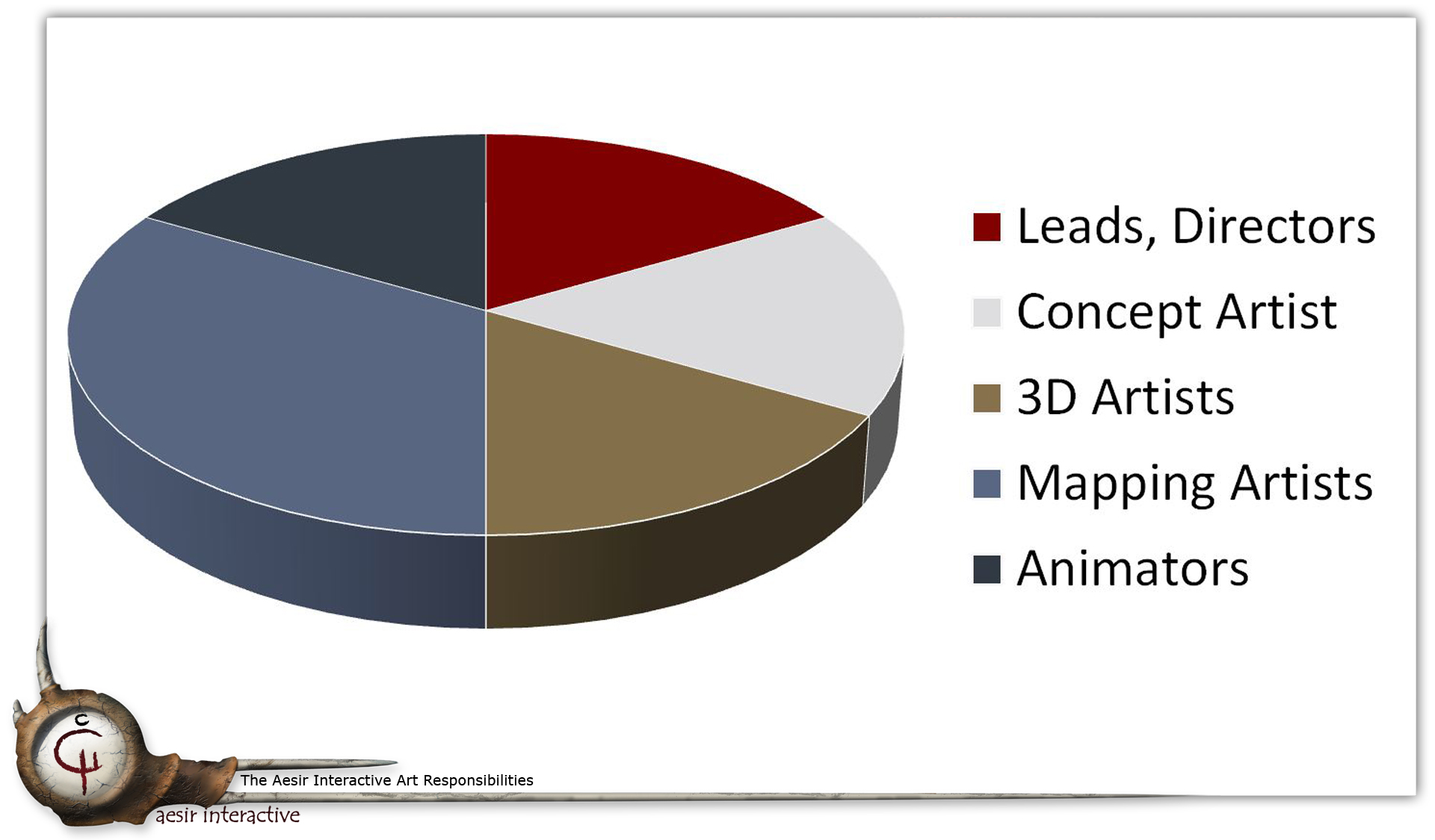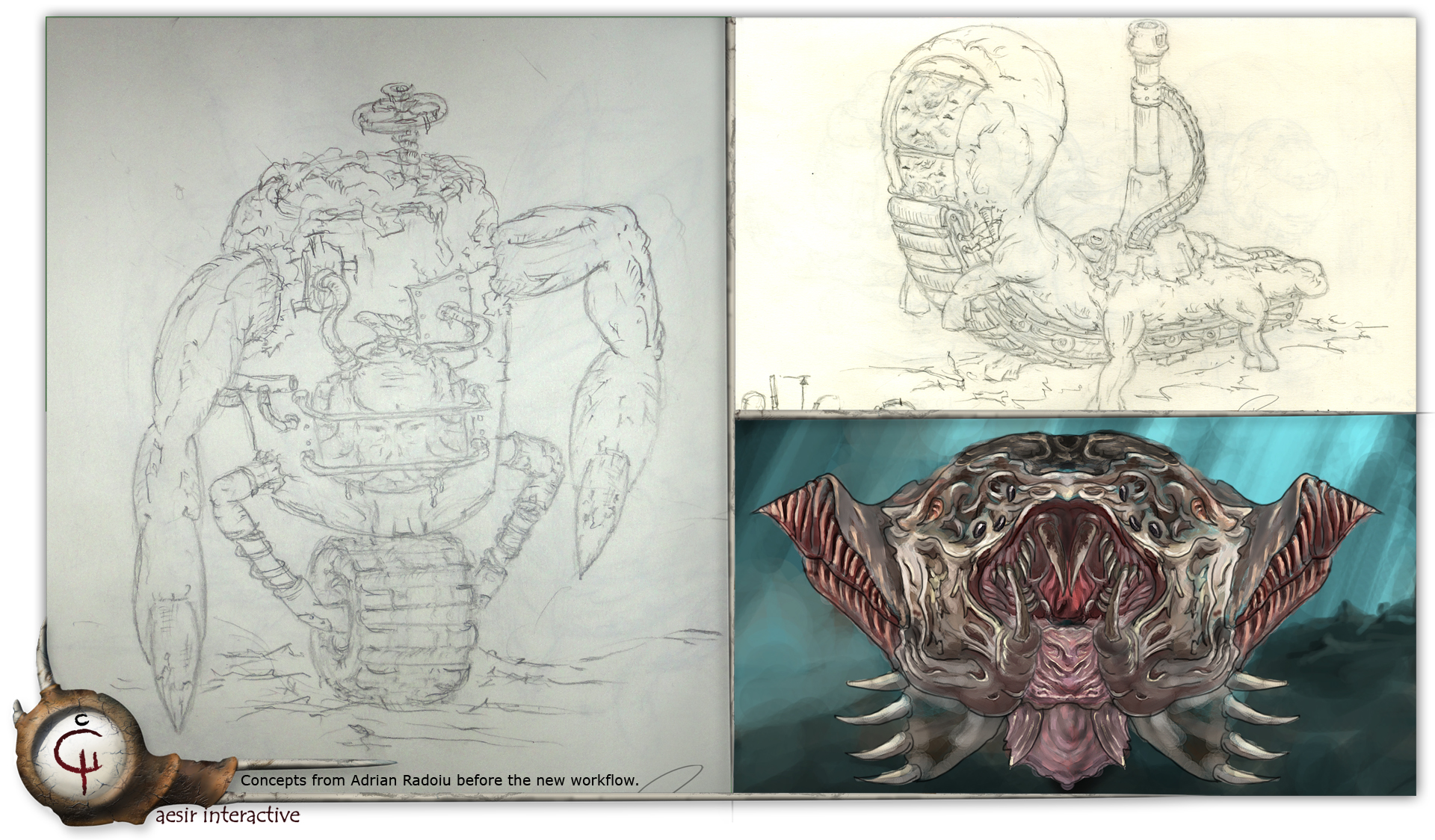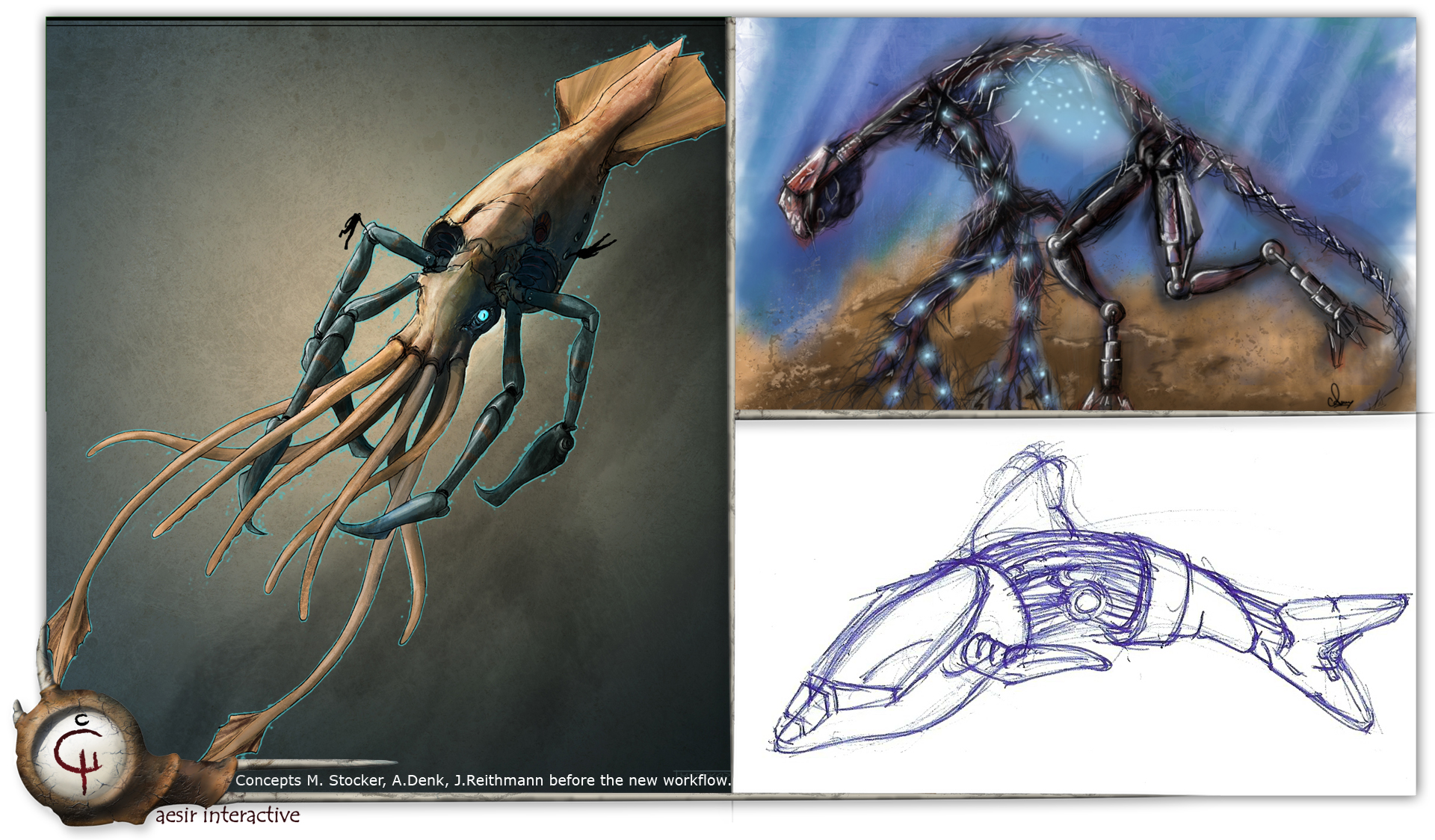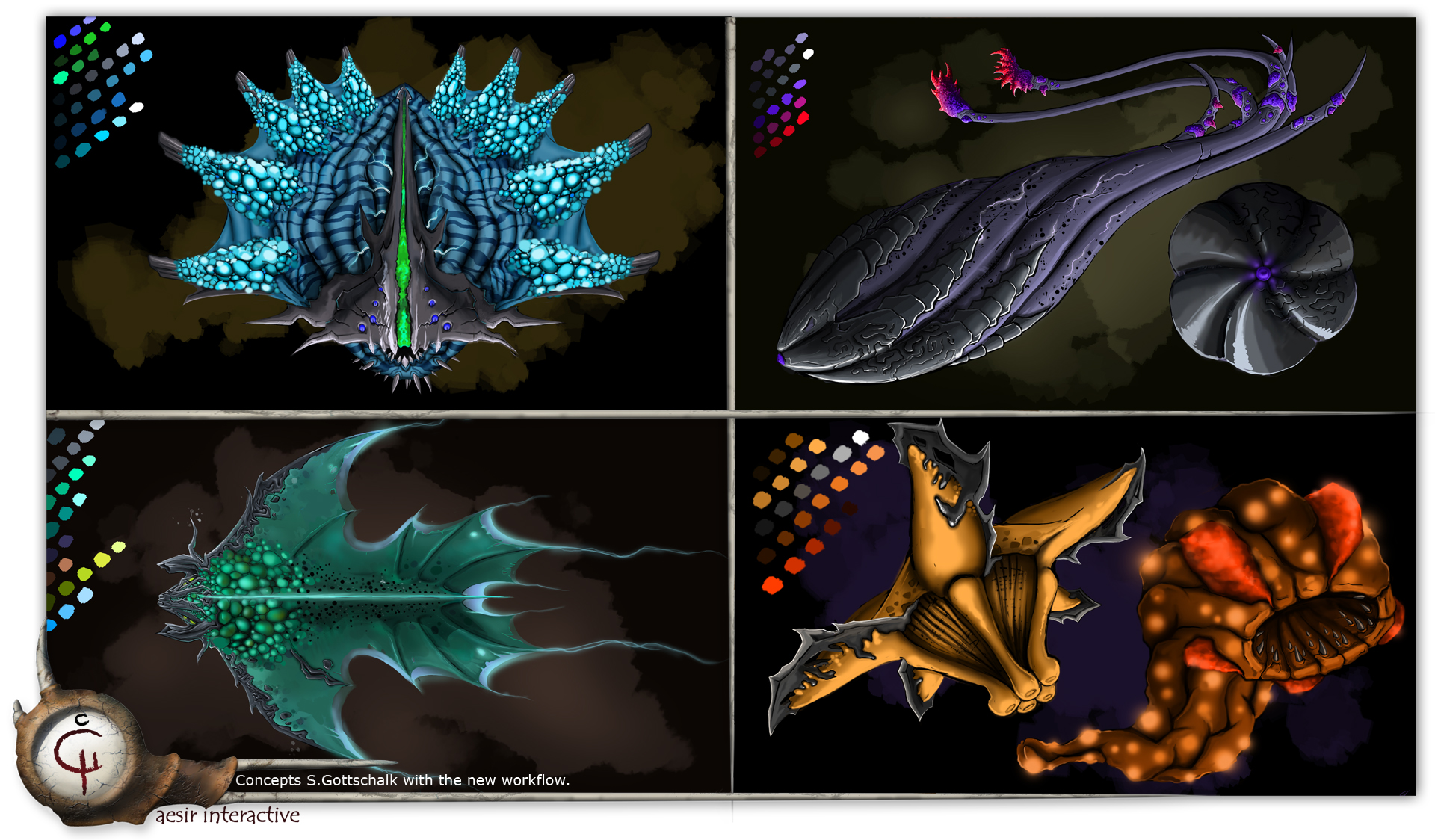1. Aesir Interactive Overview (Moddb.com)
First of all we give you a small overview about Aesir Interactive. The team got 16 internal developers. (6 Artists, 4 Programmer, 4 Gamedesigner, 1 Sound Artist, 1 Producer ). We got extern ressources from the Technical University of Applied Science in Munich and 2 bands and one composer for the sound.
2. The Art Department
The art department is divided in 1 Art Lead, 1 Art Director, 1 Concept, Artist, 1 3D Artist, 1 Mapping Artist, 2 Animators. See the picture below.
3. The Workflow
As you can see below, we are working with the waterfall principle in the art department. At November 2010 we had the chance to choose between a agile structure like Scrum or this standard layout. We tested both of them two month. Than we started a comparison. We found out, that the team size of the art department (at this time 5 members) was the huge advantage for the standard layout.
The result: Small and fast communication, we are friends and not associates and we all got one vision.
To support the principle and to destroy all standard arguments against it, we started research very early. We left no question and we tried out everything what could happen. We spent really much time for this and in the end it worked well. Maybe this approach isn't the best for the professional industry, but for a student developer team, where money isn't available and time is endless it is perfect.
So, to get images like we show you in our gallery is the result of early research, the early debate about it and the exact fragmentation of all responsibilities. On the one hand we have fast and effective communication between friends and many rules and hundreds of " How to" until we got it and on the other hand we got shape analysis, color patterns and lists about what we want and what it shouldn't be.
4. The Game-designer and his mission
The Gamedesign Department creates the design document. One of our 4 game designer is responsible for the units, buildings and the environment. He is the direct contact person for all artists. He created the template for even units, buildings etc.. at our Wiki. This template will be firstly filled out by him.
4.1 Define the task
It includes a detailed description of the units data like mass, length etc..,all animations, the optical specifications and features. There is always a mechanical and an optical report for every unit.
The axiom "form follows function" is our most important rule at this section. There are always hundreds of ideas, thousands of new features which are awesome and great and always we have to ask us the same questions.
Why is it interesting for our game?
What advantages do we get?
Does it fit to the rest of the game and how the hell do we create it?
Than every member gets the chance to discuss and improve the unit and the content of the unit. The lead game designer got the last chance of correction. The producer even takes a look over it and at most gives the game design lead a hint or some advice, but never got the right to change something without the voice of the game design lead.
4.2 Explain the mechanic of the unit.
After the task was defined the Wiki will be filled with another important section. There will be all explanations about how do the features of the unit work. Which tactic can be used and which player type uses this unit in which situation. Combining it with our audience we try to find similarities.
We try to explain every special attack, every advantage and disadvantage in the game for this unit. We always compare it to the other existing units and write down about how the player could feel by getting it built.
Than we write down a list of words like, strong, huge, slimy and purple etc.. in the Wiki. This list will be used for the certification after the concept artist created the 2D views.
Only now the task of the unit can be accessed from our project management software Hansoft.
Now its time for the Art Lead and the Art Director to checkout the unit and discuss it with the Game Designer.
We learned that every small detail we forgot at the design process costs us about 3 hours. Take the time and describe everything as detailed as possible. And yes of course good art begins with the design process.
Here are some examples before and after we got this workflow. Watch out the huge differences at the old concepts and the harmony of the new ones.
Even if the new ones got different colors and all belong to a different research sector they all seem to belong to one origin.
4.3 The Checklist
Finally the Gamedesigner is checking the list we wrote over months. This lists includes stuff like
- are the animations view-able from the ingame iso perspective ?
- are they big enough, got enough attention?
- is the unit representing its culture, its specialism.
- whats the length of the animations, the frequency or the attacks?
- which tactics can be applied. etc..
